Originally part of the Lower East Side, the East Village in New York developed in the sixties through its multicultural influences into an exciting identity of its own and thus into a separate district in the so-called “Village” of New York City.
Rock clubs sprang up on every corner and in the 1970s many drug handling points were added, but that didn’t stop the punks, musicians, and artists from continuing to colonize the area.
In the early 1980s, the East Village art galleries were one of the first to show exhibitions by artists such as Jean-Michel Basquiat and Keith Haring. Today the East Village is one of the hippest and most exciting areas in Manhattan. The mix of influences from the past and modern New York today gives the area its very special charm
The blocks east of Broadway between Houston and 14th Street are now free of quaint drug sheds and have definitely lost their former peak, but the residents – mostly entrepreneurs and nouveau riche kids – can afford the expensive apartments in the former tenements.
READ: New York Libraries: A Bit of History and Big News
The East Village has been an upscale residential area with trendy boutiques, trendy restaurants, and lounges, especially since the 1990s. Anyone who knows Williamsburg in Brooklyn will find a lot in common here. It’s just oozing with unconventionality, which is what makes this area so exciting.
There are a few options to get to the East Village. On the one hand, you can take the 6 to Astor Place. Or take the W or R to 8th Street NYU Station.
Our TOP 5
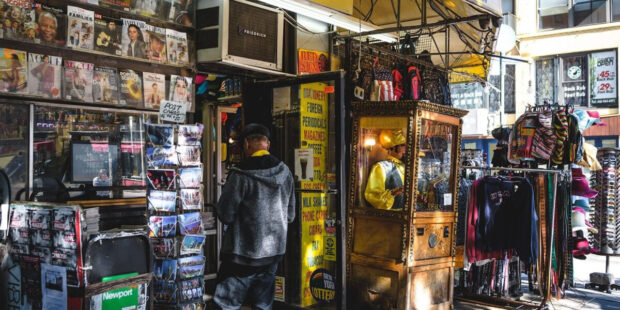
From the 1950s to the 1970s, St Marks Place (E 8th Street, between Lafayette Street and A Avenue) was home to artists, writers, and musicians. These included WH Auden, Abbie Hoffmann, Lenny Bruce, Joni Mitchell, and GG Allin.
The vibe of these celebrities can still be felt today, but it is now home to New York’s hippest tattoo studios, cheap restaurants, and small boutiques that sell t-shirts to tourists. There are also countless coffee shops, hip restaurants, and second-hand shops.
The street art of the best artists in the city then adds even more character to the area.
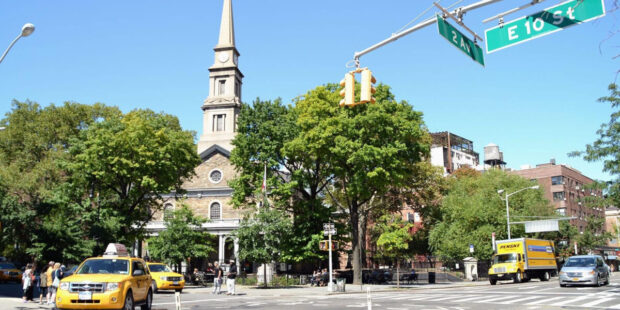
A short walk from the enclave of E 8th Street, between Lafayette Street and Avenue A heading north to 131 E 10th Street on Second Avenue brings you to St. Mark’s Church.
READ: 10 Famous Historical Persons of New York
It was built in 1799, is the burial place of Peter Stuyvesant – General Manager of the Dutch colony Nieuw Amsterdam. Services are still held in the church today.
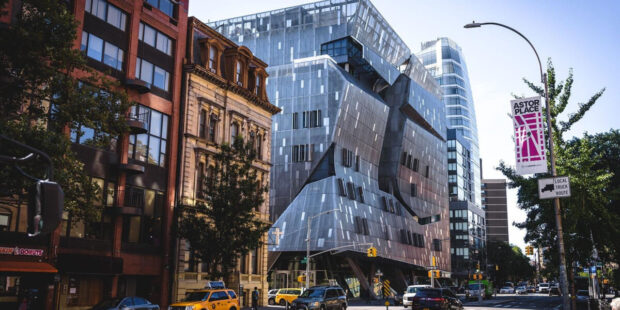
South of East 8th Avenue is Astor Place – the place of the Cooper Union – where many art schools, architecture offices, and schools have now settled. This historical place is actually the one where Abraham Lincoln gave his famous Cooper Union speech in February 1860, which was instrumental in moving him into the White House later.
During the 19th century, Astor Place marked the border with the slums to the east and the city’s chicest houses at the time: Colonnade Row.
This is where the Astor Public Library is located, which Joseph Papp saved from demolition in 1960. Today the old library building houses parts of the Public Theater – a theater for new plays in the USA. You can get a great insight into the world of the “upper class” in 1800 in the directly adjacent Merchant’s House Museum.
Below Astor Place, Third Avenue runs into the Bowery. This street used to consist mainly of farms, but in the late 18th century it developed into one of the most elegant streets in New York, lined with fashion shops and the estates of wealthy citizens.
In the 19th century, things were definitely wicked on the Bowery – brothels, prostitution, drugs were common here. There is not much left of it today because more and more apartment buildings were built due to the gentrification that has been taking place since the 90s. The homeless shelters disappeared, rents rose and today the Bowery is a trendy residential area that very few can afford.
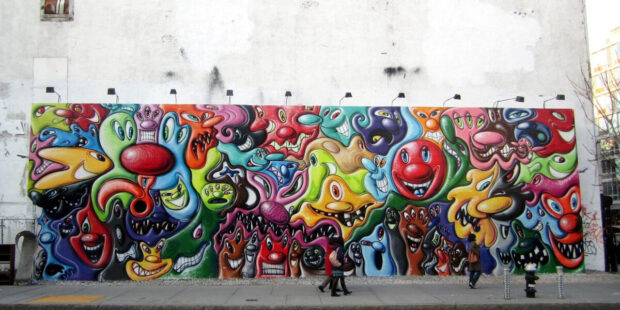
The Bowery is unmistakable for its nightlife in particular – the many bars, clubs and trendy restaurants are only found here in this form. Bars like the well-known proletariat belong to the area like the Charging Bull to Wall Street.
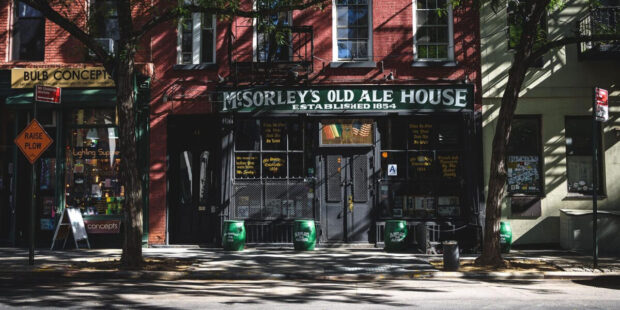
McSorley’s Old Ale House in the beautiful East Village is a true legend. This pub is the oldest in town – opened in 1854 – and best of all, it hasn’t changed much since then. Old wooden floorboards covered with sawdust, old newspaper articles and a bartender like something out of a Hollywood strip make McSorley’s a very relaxed place. Above the bar, there is also a wooden chair on which Abraham Lincoln is said to have sat.
Already in the early afternoon, it is the meeting point for the locals who stand in front of the bar for a chat with the owner or sit at the bar. The beer is also sensational: there are only 2 types, but the price is unbeatable: the pair costs 5 dollars, which is a rarity in New York. Find out more about the exciting history of the city’s oldest pub.
Like us on Facebook for more stories like this: